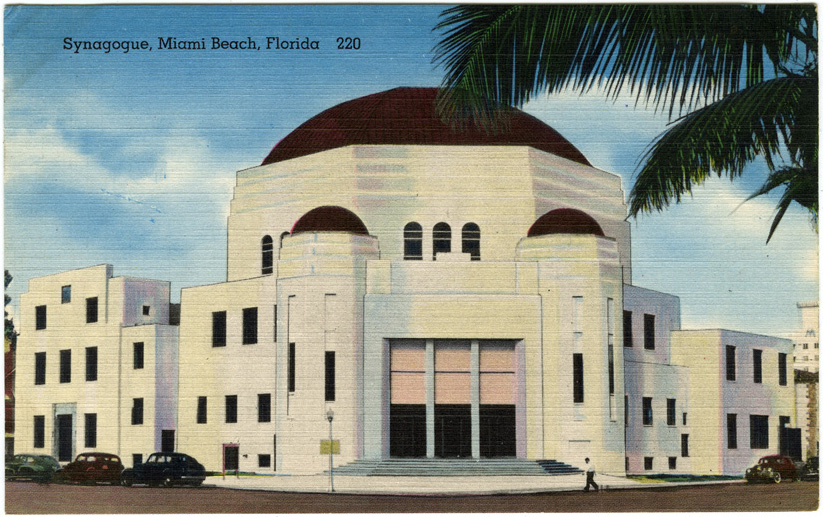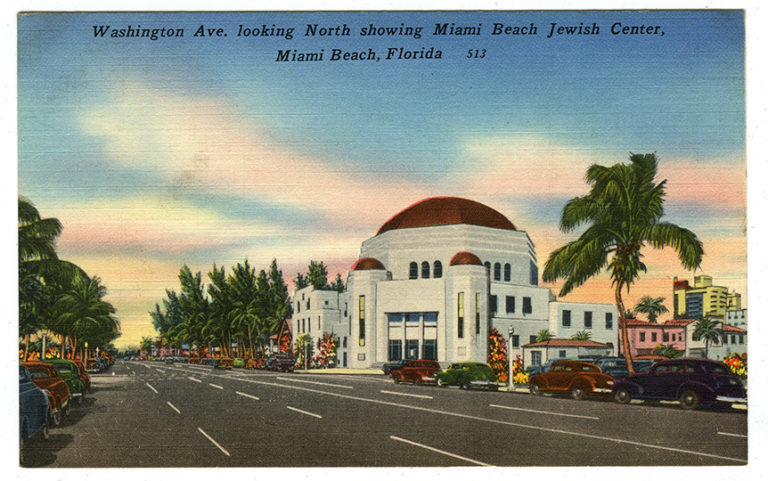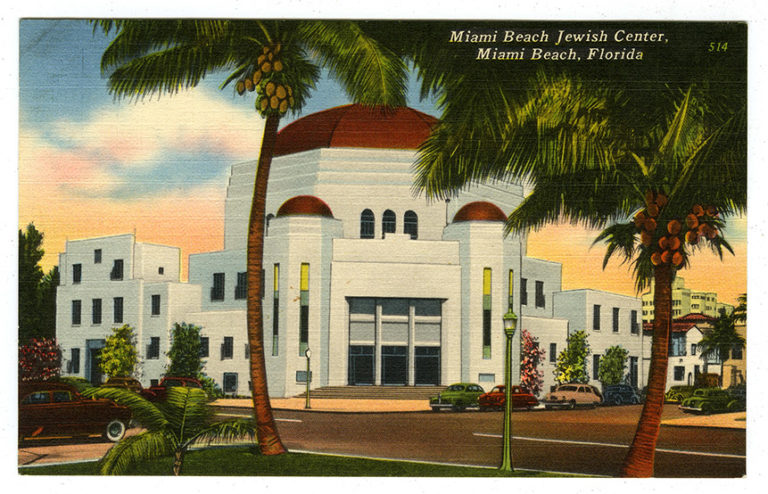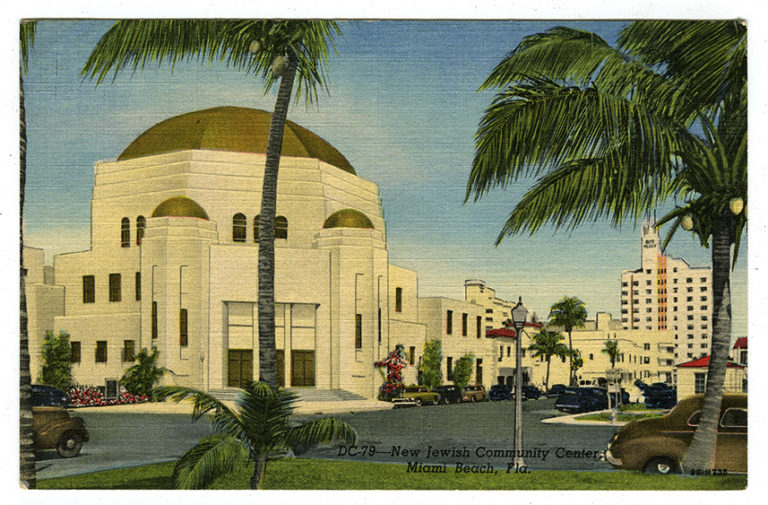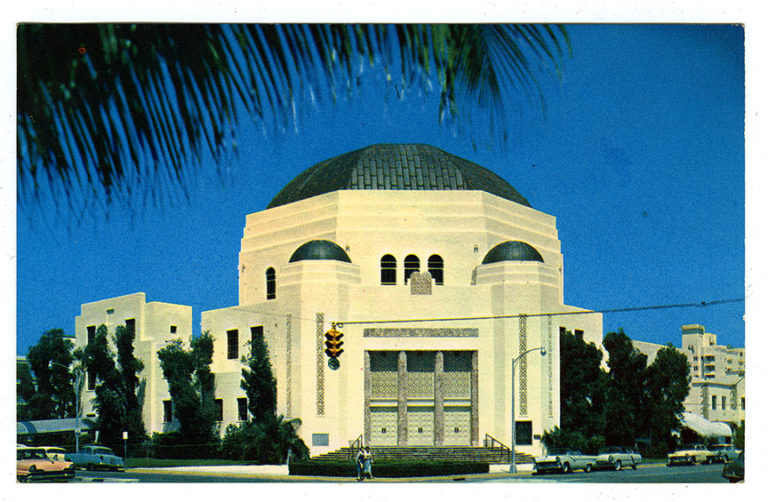9.2 Miami Beach, Florida
Temple Emanu-El, 1701 Washington Avenue
Charles Greco, architect (with Albert Anis), 1948
Novelti-Craft Co., Miami, Florida, publisher; no date. Also on back: “A ‘Colourpicture’ publication, Boston 15, Mass., U.S.A.”
Temple Emanu-El (God is with us) was founded as the Orthodox Congregation Jacob Joseph of Miami Beach in 1938, but after a schism and two changes of name in the 1940s it evolved into the Conservative Temple Emanu-El. The impressive domed building, completed in 1948, is a local landmark and represents the culmination of the Art Deco style in synagogue design in the United States.
Designed by the Boston-based architect Charles Greco (1873–1962), the temple reflects the transition between the Byzantine Revival–style synagogues of the interwar years (of which Greco designed important examples) and the new expressive modernism of the post–World War II era.
The temple’s design draws on Moorish and Byzantine architectural forms popular for synagogues, but here everything is made smooth and sleek in the Art Deco style, and white in the manner of so much Art Moderne design. The building features a rotunda and a copper dome that stands more than ten stories tall. Two vestigial towers flank the main entrance. The sanctuary seats 1,400 worshipers. Temple Emanu-El has been compared to the Great Synagogue of Tunis, Tunisia, built in the 1930s, but there is no direct connection. The design of the Miami Beach synagogue more directly derives from Greco’s work in the 1920s and 1930s, especially his synagogues Temple Tifereth Israel (1924) in Cleveland, Ohio, and Congregation Beth Israel (1933) in West Hartford, Connecticut. Those buildings exemplify some of the most significant developments of the interwar years, especially the tight building mass and mastery of the hemispherical dome.
Temple Emanu-El’s style is also in keeping with the dominant Art Deco aesthetic of the area, and it is likely that architect Alfred Anis, who was well known for his many Art Deco hotels of the 1930s and 1940s, helped give the synagogue its final “Miami Beach” look. This was the last major synagogue Greco built. He competed for other post-war commissions but did not prevail.
The congregation prospered in its new facility, bolstered by the large and rapid influx of Jews from the Northeast to Miami Beach. In 1954, the Miami Beach Jewish Center changed its name to Temple Emanu-El.
During the 1950s and 1960s, the congregation grew, and its facilities were expanded several times. A ballroom and classroom building were built on a donated plot of land next door. Morris Lapidus, renowned as architect and designer of the Lincoln Road Mall and the Fontainebleau Hotel (as well as several synagogues), oversaw construction of the school. By 2000, the complex was in need of repair. Architect and designer Kenneth Treister supervised the project, and he designed a sculpture, The Dove of Peace, placed near the entrance. The sanctuary was named the Frost Sanctuary after major donors to the renovation.
